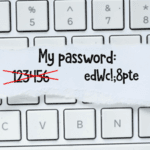LastPass, a widely used password manager with over 33 million users, recently uncovered an imposter app sneakily named “LassPass” on the Apple app store.
This devious doppelgnger mimicked LastPass’s real logo and intentionally dropped a letter, banking on people not noticing.
The mastermind, an individual named Parvati Patel, seemingly engineered LassPass to steal sensitive user data.
The goal was to dupe unwitting downloaders into entering private account credentials, enabling access for identity and money theft.
Understanding Typosquatting and Prevention Methods
The LassPass scam epitomizes “typosquatting” – creating fake sites or apps with names barely different from popular brands.
Deceivers hope users won’t realize the minute errors before volunteering personal details.
Safeguard against such ploys by using an authentic company’s provided app link instead of browsing app stores.
Also inspect social signals like download totals, ratings, and release dates which can expose sham apps.
Watch for red flags too – typos, sketchy developer names, etc.
Stay vigilant!
Considering Future Implications
Reflections on the Security Breach
LassPass puncturing Apple’s acclaimed security defenses is disturbing.
It highlights vulnerabilities even robust review systems face against increasingly sophisticated cybercriminals.
Anticipating Future Scams and Protective Measures
While LassPass was caught, its success may embolden similar exploits.
As crooks constantly evolve new tricks, users and companies must remain alert and continuously update defenses.
Through collective education, caution, and using trustworthy sources, we can outsmart scammers.





